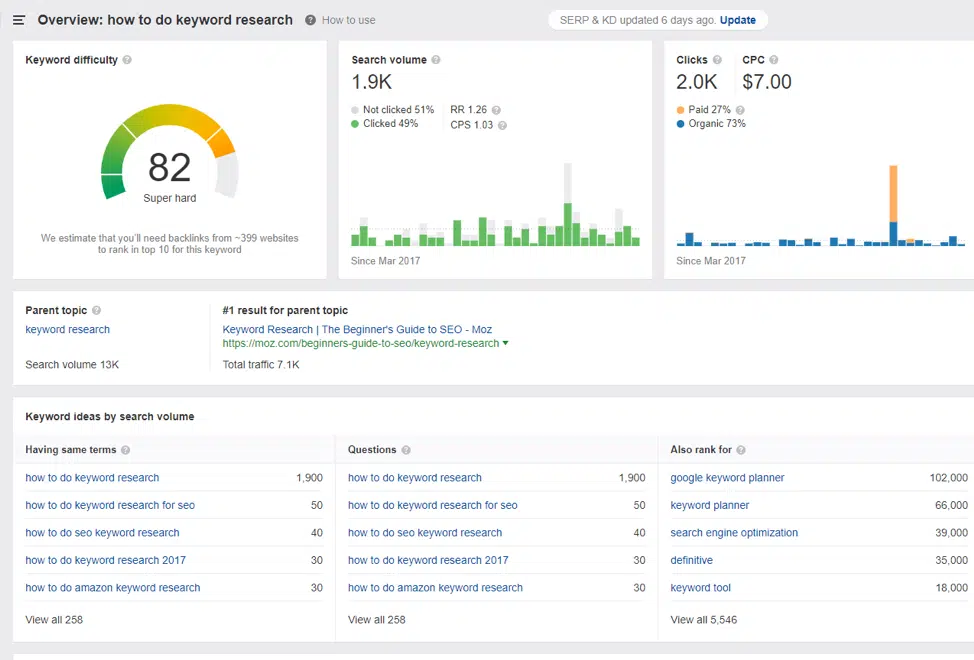As an author, I have little doubt that you are highly skilled in stringing together beautiful sentences with a unique, flavorful, and varied vocabulary.
But alas, I am going to have to ask you to put down the creative hat you wear so well for just a few minutes and exchange it for your left-brain dominant “SEO” hat instead.
We’re now going to do a quick walkthrough on how to do keyword research for your product on Amazon. This requires you to think less about how to communicate in a clever way, and instead focus on how to say things in the same way that your target audience would say them.
Getting in the Head of Your Audience
Product page traffic is inversely related to how well targeted your page (or book) is for keywords that searchers are looking for on Amazon (and Google, for that matter).
When people set out on an internet search with a question in mind, they are often looking for a specific answer. If you have lined up your book, product, or services well with that question, there is a greater chance that your product page or website will appear in the results.
Too often, people fail to do adequate keyword research by thinking about how their intended audience talks to their friends about the topic they are targeting.
As an example, while you might consider your coffee shop to be a “boutique espresso lounge,” the majority of your target customers are looking for a “coffee shop near me.”
Semantics Matter – A lot
I’d like you to pay close attention to what I am about to say next.
“How you talk about your product/service is often different than how your customers talk about it.”
When you’re evaluating what ought to go into your Google AdWords copy or product description on Amazon, you will need to pay serious attention to the keywords that people are searching for and make sure that you’re targeting as many of those exact phrases as possible.
Understanding Search Volume
Search volume is a key metric you’ll want to be focusing your attention on. It is an algorithmic estimation of how many people search for a given keyword in a month, broken down by country.
Typically, the longer the keyword gets, the less monthly search volume you will see for it.
The images shown below are taken from AHREFS, a powerful SEO and keyword research tool.
For example, in this snapshot, the keyword “business coach” gets 3,400 searches a month in the United States alone.
However, if you look at the keyword “what is a business coach,” you’ll see that it only gets 250 searches a month—GLOBALLY. As the keyword gets longer and more specific, the search volume falls.
Now, this isn’t necessarily a bad thing. Oftentimes answering a very specific question for a searcher can be an indication that they’re further down the funnel and closer to making a purchase.
It’s important to note that keywords with more search volume typically are more competitive, hence the keyword difficulty rating.
Keyword Difficulty Rating
The keyword difficulty rating tells you how competitive the keyword is going to be on a scale of 1 to 100. This rating is an approximation of how many other websites are trying to rank for that keyword. While this is mainly a tool used in SEO (regular Google search), it’s vital to pay attention to this rating for your Google AdWords and Amazon Advertising as well.
More competitive keywords mean a higher cost per click, and a more expensive ad campaign overall.
Striking the Right Balance in Your Keyword Research
Keyword research is a topic that merits its own guide, as there are many factors to consider.
That said, following these five simple steps below will help you strike the right balance, giving you a place to start and tools to get the ball rolling.
- Put yourself in the shoes of your target customer: how do they talk about your product or service?
- Use a keyword research tool like AHREFS, UberSuggest, SEMRush, or even Keyword Tool (for Amazon) to get insights on what people are looking for.
- Build a repository of keywords that are related to your parent topic, and take note of both the search volume and keyword difficulty of each. Find a balance of keywords that have an adequate amount of search volume and aren’t too competitive.
- Use common sense: how would YOU look for the product or service?
- Format multiple variants of your ads that target your ideal audience based on your research.
A Final Word on Searcher’s Intent
When doing effective keyword research, pay close attention to the searcher’s intent of the keywords that you are researching.
As an example, a keyword like “bikes for sale” has a lot more purchasing intent than a general keyword like “bikes.”
When you spend more time in the mindset of your target audience, a natural sense of the best keywords to target will start to gel together. And as you begin to compile your keyword findings, you’ll be set up for success in the targeting of your Amazon and Google Ads.




